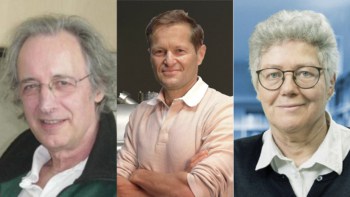
The diffraction limit has been beaten by a factor of 38 by a new technique that uses microwaves to locate objects. Developed by physicists in France and Germany, the technique is inspired by the coded aperture method and works by allowing light or sound waves to echo and randomly scatter within an enclosed space.
Developed by the trio of Michael del Hougne at the University of Würzburg, Sylvain Gigan of the Laboratoire Kastler Brossel and Philipp del Hougne at the University of Rennes, the technique has been used to determine position of a small cube to within 1/76th of the microwave wavelength used.
The diffraction limit places a stringent lower bound on the resolution of imaging and location techniques that use light, sound or other waves. The limit makes it impossible to use conventional methods to distinguish features that are slightly smaller than 1/2 the wavelength of the waves being used. This is a problem for some popular imaging and location techniques that use ultrasound, microwaves and radio waves – where wavelengths range from hundreds of microns to metres.
There are ways of overcoming the diffraction limit – such as placing a detector less than half a wavelength away from an object and detecting short-lived evanescent waves – but these techniques are often difficult or impractical to implement.
Irregularly shaped cavity
The trio took an alternative approach based on the coded aperture concept, which is used in specialized imaging applications. Here, a scattering structure such as an irregularly shaped cavity is placed between the illuminated object and a single-pixel detector. The scattering structure is altered using coded masks that block certain patterns of waves from reaching the detector. Multiple measurements are made, and the results are used to create a mathematical reconstruction of the object.
Building on this approach, the trio have found a way to make the technique more sensitive to sub-wavelength details. This involves placing both the object and the illumination source inside a cavity where waves can scatter off the walls (see figure). A key feature of the technique is that the waves encounter the object multiple times before arriving at the detector, which is inside the cavity. Also inside the cavity are programmable reflective metasurfaces, which alter the properties of the scattering structure.
Neural network
To test their technique, the trio placed a 4.5 cm metal cube within a metre-wide cavity. The cube was illuminated with 12 cm wavelength microwaves and the detector signals were processed using an artificial neural network.

Acoustic metamaterials and machine learning beat the diffraction limit
When the cube was moved to different random locations within the box, the team was able to determine it position to within just 0.16 cm. At about 1/76 of the microwave wavelength, this is well below the diffraction limit. This spatial accuracy improved when the waves were left to echo for longer.
Although the concept is still some way from real-world application, the team believes it could be further developed to non-invasively locate small objects within large rooms, using the echoes of radio or acoustic waves.
The research is described in Physical Review Letters.



